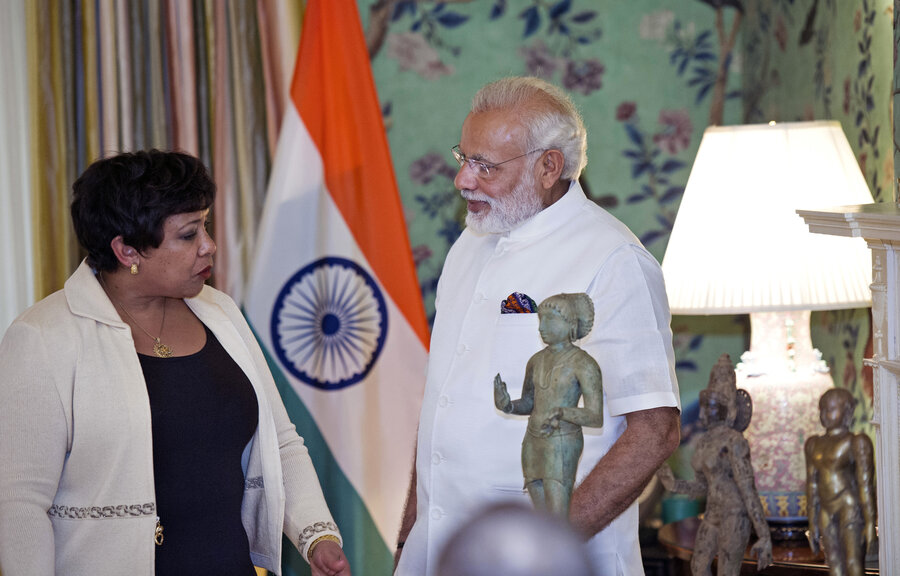US returns $100 million in stolen artifacts to India
Loading...
Nine years ago, federal investigators received a tip about an unusual shipment of nine crates bound for the United States, described as "marble garden table sets."
But instead of furniture, they found the crates held hundreds of valuable artifacts looted from religious sites in India, some over 2,000 years old. US authorities estimate the artifacts are collectively worth more than $100 million.
On Monday, the US returned religious statues, bronzes, and terra cotta pieces to the Indian government, with Attorney General Loretta Lynch formally presenting them at a joint ceremony with Indian Prime Minister Narendra Modi.
"The United States is committed to ensuring that no nation is robbed of the objects that inform its identity, shape its traditions, and inspire its citizens," Ms. Lynch said Monday.
"Today, as part of that ongoing commitment, more than 200 antiquities and cultural artifacts that speak to India’s astounding history and beautiful culture are beginning their journey home. It is my hope – and the hope of the American people – that this repatriation will serve as a sign of our great respect for India’s culture; our deep admiration for its people; and our sincere appreciation for the ties between our nations."
The items were discovered in a joint investigation appropriately nicknamed "Hidden Idol" by Immigration and Customs Enforcement (ICE), Homeland Security Investigations, US Attorneys in the Eastern and Southern District of New York, and the Justice Department’s Office of International Affairs.
Many of the pieces were discovered in crates imported by Subhash Kapoor, an art dealer who is now awaiting trial in India, ICE said on Monday.
The pieces include a statue of Saint Manikkavichavakar, a Hindu mystic and poet from the Chola period (around 850 to 1250 AD), stolen from the Sivan Temple in Chennai, India. It’s estimated to be valued at $1.5 million.
A bronze sculpture of the Hindu god Ganesh about 1,000 years old, according to ICE.
Mr. Kapoor, who was previously based in New York, has pleaded not guilty, while five other people were also arrested in connection with the ancient artifacts. Some of the items were found in the Honolulu Museum and the Peabody Essex in Massachusetts, which surrendered the items and began working with investigators.
In March, ICE agents recovered Indian statues, from the 8th and 10th centuries AD, on the auction block at Christie’s in New York.
Manhattan District Attorney Cyrus Vance noted that art collectors had spent an estimated $360 million on Asian antiquities and art.
"With high demand from all corners of the globe, collectors must be certain of provenance before purchasing," he said in a statement. "I urge dealers and auction houses to take every necessary precaution to avoid facilitating the sale of cultural heritage stolen from other civilizations. If a provenance is in doubt, report it to law enforcement authorities."
Since 2007, federal agents have returned more than 7,500 artifacts to 30 countries, ICE said on Monday.
"Protecting the cultural heritage of our global community is important work and we are committed to identifying and returning these priceless items to their countries of origin and rightful owners," said Secretary of Homeland Security Jeh Johnson.







